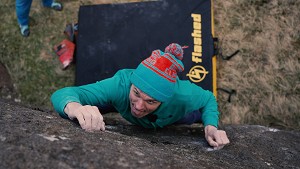
As you make your pad, so you will land on it. There are more differences among crash pads than you might think. A look inside the Ocún crash pad reveals that a reliable crash pad is definitely not just a nicely wrapped piece of foam.
Crash pads are subject to fashion trends like all climbing gear. They are purple, pink, and striped. But inside, most look the same – several layers of foam on top of one another. The different stiffness of the individual layers is the only element which has a direct effect on their ability to cushion falls. There is one exception to this rule and that is Ocún's crash pads with an internal construction called FTS (Foam Tube Suspension).
Completely different crash pads
A seamstress sews yellow and black sacks of strong, durable fabric at a large sewing machine. She proceeds systematically, repeating each task ten times to form the basis of a set for ten crash pads. She also attaches shoulder and waist straps, zippers, and loops to the covers. The zippers are sewn on two sides of the rectangular shape, which is a practical feature that allows the pad to be unfolded classically or lengthwise. The longitudinal layout is handy under traverse boulders or at night, when you want to sleep on the crash pad.
At the next table, her colleague inserts foam rollers into a foam template. From above, her job looks a bit like filling a honeycomb in a beehive. If stitching mattress covers is a common phenomenon in any crash pad factory, the same definitely cannot be said for this job.
Standing on its head
When inventing FTS, the developers let their imagination run wild and stood the basic assumption of horizontal foam layers on its head. In other words – they stacked the shock-absorbing foam in the crash pad upright. The foam in FTS crash pads serves only as a template for vertically placed rollers. These rollers are crucially responsible for the softness of your landing. The advantages of a vertical solution are numerous. It offers substantial weight-saving to the pad (rollers are made of light foam, hollow inside). In addition, this design prevents the pad from being deformed in the middle, the most frequent impact point. Crash pads with FTS work equally well in the middle and on the edges. And most importantly, compared to other pads of the same thickness, these pads actually absorb falls the most effectively.
This can be verified by measurement. There is a precise methodology based on impact testing for children´s playgrounds. It may seem a bit brutal, but it measures the ability of a surface to cushion the impact of a round object that is as similar in size and weight to a human head as possible. Hence the abbreviation HIC (Head Injury Criterion).
Measurable safety
The HIC value is obtained by a practical test – by dropping the round object mentioned above from a height on the pad. Height, gravitational acceleration and, of course, the quality of the pad also affect the result. That's what we're all about. HIC = 400 is considered a safe value (unit not specified). In order to make the comparison of the results of the individual mattresses as clear as possible, we drop the "head-like" objects from different heights one by one and we find the height at which it reaches the result of HIC = 400 for each pad. Of course, the higher the height for HIC = 400, the better the crash pad. Thus softer falls. And all the more peace of mind when you have two or three meters of air under your feet and then the landing area underneath.
How to make a crash pad
However, the testing of the finished pads is preceded by at least two years filled with a lot of work. It all starts at the development department meeting, where the project brief is put together – what parameters must the crash pad meet (see HIC), how big it needs to be, how much it can weigh, what special features we need to come up with.
Mass production can only begin after the thorough testing of the prototypes. And this does not consist of few steps. There's the cutting of textile material, sewing covers, pouches, shoulder and waist straps, sewing zippers, cutting of foam templates, filling them with cushioning rollers, stuffing the fillings into the packaging, sealing, labeling, packing, and stacking. Each step naturally contains a number of smaller steps. On average, one crash pad takes three to four hours purely devoted to its production.
Dominator for use under every highball
The first crash pad with FTS was the Dominator. We introduced it to the market in 2011 and its original design was appreciated by the judges of the ISPO outdoor equipment fair in Munich. Its typical yellow-black design has been associated with exceptionally good technical parameters for years and that is why it is purchased by top boulderers and bouldering enthusiasts who want to always think about the next step in their highballing efforts, not about twisted ankles and broken knees.
An overview of all crash pads with FTS
Since this year, FTS can be found not only in Dominator, but also in the insides of several other crash pads. Rolls are now cushioning impacts with the giant Incubator, popular Moonwalk, and this year's new release, called the Joker.
Dominator – iconic yellow-black crash pad, 14.5-cm thick when unfolded, FTS has had since its inception in 2011, with longitudinal unfolding, comfortable reinforced shoulder straps, lumbar strap, integrated rug, and so on.
Incubator – this pad combines a large landing area with unexpected foldability, which is why we also call it the most compact giant crash pad on the market; when unfolded it measures 218 x 100 cm, the new four-piece construction also allows it to be folded in half to create a 20-cm thick impact area; folded, it can fit in the boot of an average car. The carrying system is designed to be non-dirty when unfolded, so you won't get your back dirty when carrying the Incubator.
Moonwalk – universal pad for boulderers who want to try a little bit of everything. Two layout ways, padded shoulder straps, integrated rug.
Joker – new this year, small, but effective. You can fold the Joker lengthwise. It also has padded shoulder straps and an integrated rug. Available in two vibrant colors.
- The Dominator, Moonwalk, and Joker are equipped with an ingenious 1+1 system that allows two folded crash pads to be easily connected and transported by one person.
What about the environment?
Environmentally-minded climbers may be pleased to know that the roller templates, which are the basis of FTS, are obtained as waste material from other industries. Their second life is much more interesting and also longer, because an honestly created crash pad lasts for many years.
We process around 700 m3 of this residual foam per year, which at a bulk weight of 28 kg/m3 saves around 20 tons of material.
In addition, in recent years we have stopped using materials containing PVC in the production of crash pads, which is not friendly to nature due to its long decomposition time.
And finally – before the crash pads go on their way to the shops and climbers, we wrap them in recycled foil. And not only the ones with FTS, but all of them.
12 steps to finished crash pads
- an idea translated into an assignment
- concept creation – design, materials, production technology...
- research and testing of properties of selected materials – e.g. abrasion resistance, color fastness…
- production of prototypes
- validation – verification of functionality of individual structural elements, load tests, test climbing...
- feedback
- evaluation of feedback and incorporation of changes
- further prototyping and subsequent validation, feedback (these steps can be repeated multiple times)
- verification of the HIC value in an accredited testing laboratory
- production
- distribution
- thousands of soft landings :-)
Inner beauty
Next time you think about what crash pad you want to put on your back when climbing up the hill for your projects, you might remember the abbreviations FTS and HIC. Here's to saving a few kilos and the promise of soft landings.
Crash pads are not only worth choosing according to price and color. Because real beauty is inside and that goes for crash pads as well. A good crash pad will be your partner for years – in discomfort, dirt, and among sharp rocks. It's kind to your ankles and the planet. So may it serve you well.


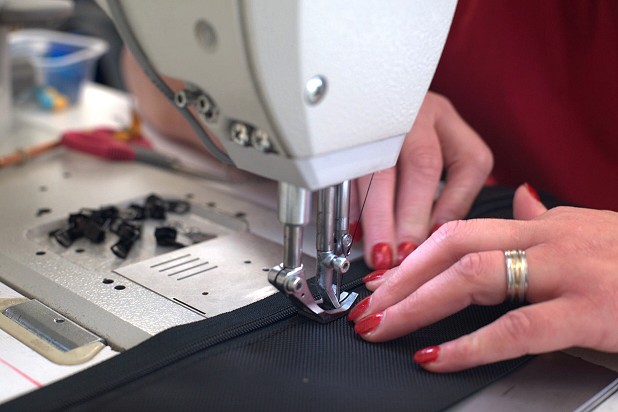
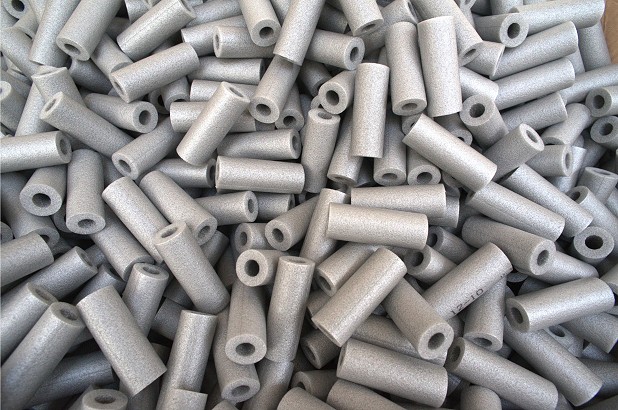


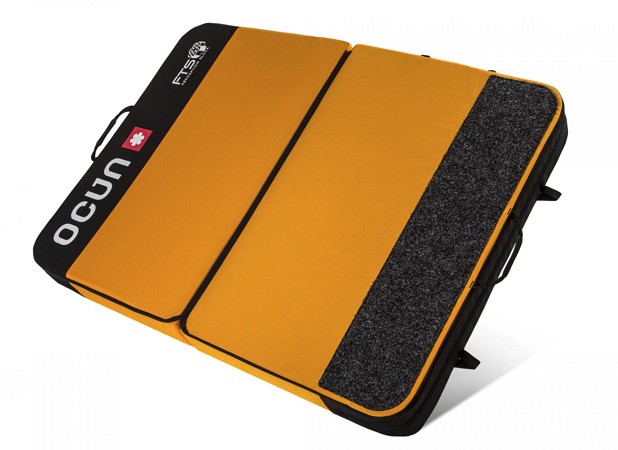
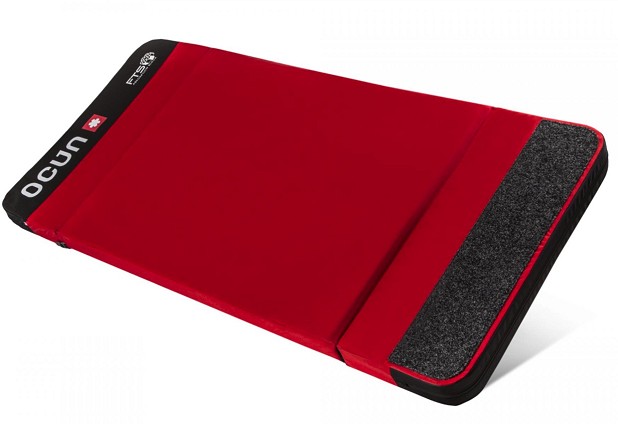


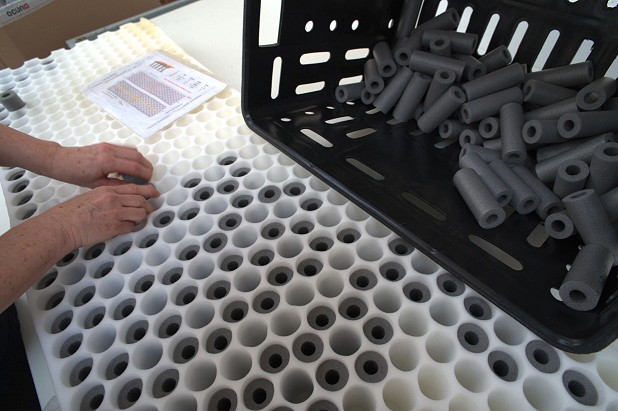
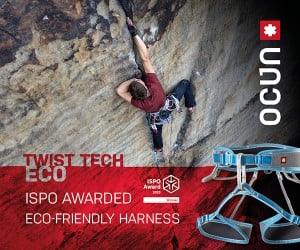

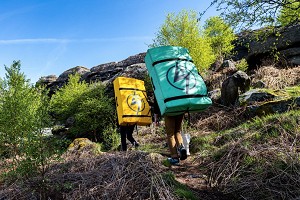
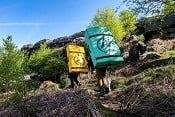
Comments